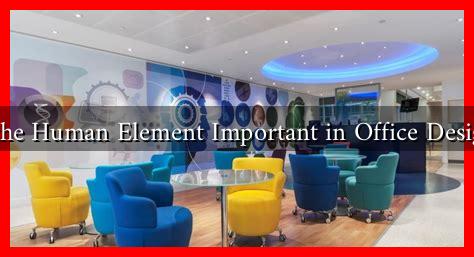-
Table of Contents
- Is the Human Element Important in Office Design?
- The Shift Towards Human-Centric Design
- Key Benefits of Human-Centric Office Design
- Case Studies: Successful Human-Centric Office Designs
- Statistics Supporting Human-Centric Design
- Challenges in Implementing Human-Centric Design
- Conclusion: The Future of Office Design
Is the Human Element Important in Office Design?
In the modern workplace, the design of office spaces has evolved significantly, moving beyond mere aesthetics to focus on functionality, employee well-being, and productivity. The human element in office design is crucial, as it directly impacts employee satisfaction, collaboration, and overall organizational success. This article explores the importance of the human element in office design, supported by research, case studies, and practical examples.
The Shift Towards Human-Centric Design
Traditionally, office design emphasized efficiency and cost-effectiveness, often resulting in sterile environments that prioritized space over people. However, recent trends indicate a shift towards human-centric design, which considers the needs, preferences, and behaviors of employees. This approach recognizes that a well-designed workspace can enhance creativity, collaboration, and well-being.
Key Benefits of Human-Centric Office Design
Investing in human-centric office design offers numerous benefits for organizations. Here are some key advantages:
- Enhanced Employee Well-Being: A thoughtfully designed workspace can reduce stress and promote mental health. Natural light, greenery, and ergonomic furniture contribute to a more comfortable environment.
- Increased Productivity: Research shows that employees in well-designed offices are more productive. A study by the World Green Building Council found that improved indoor environments can boost productivity by up to 11%.
- Improved Collaboration: Open spaces, collaborative areas, and flexible layouts encourage teamwork and communication among employees, fostering a culture of innovation.
- Attraction and Retention of Talent: A modern, appealing office can attract top talent and reduce turnover rates. Companies like Google and Facebook are known for their innovative office designs that prioritize employee experience.
Case Studies: Successful Human-Centric Office Designs
Several organizations have successfully implemented human-centric design principles in their office spaces. Here are a few notable examples:
- Airbnb: The company’s San Francisco headquarters features open spaces, communal areas, and a design that reflects its brand ethos. Employees enjoy a vibrant environment that encourages collaboration and creativity.
- Microsoft: Microsoft’s offices are designed with flexibility in mind, allowing employees to choose their work environment based on their tasks. This adaptability has led to increased employee satisfaction and productivity.
- WeWork: Known for its co-working spaces, WeWork emphasizes community and collaboration. Its designs incorporate comfortable lounges, meeting rooms, and event spaces that foster interaction among members.
Statistics Supporting Human-Centric Design
Numerous studies highlight the positive impact of human-centric office design on employee performance and satisfaction:
- A study by the Harvard T.H. Chan School of Public Health found that employees in well-ventilated offices experienced a 61% increase in cognitive function.
- The American Society of Interior Designers reported that 90% of employees believe that office design affects their productivity.
- According to a survey by Gensler, 70% of employees feel more engaged when their workplace is designed with their needs in mind.
Challenges in Implementing Human-Centric Design
While the benefits of human-centric office design are clear, organizations may face challenges in implementation:
- Budget Constraints: High-quality materials and innovative designs can be costly, making it difficult for some organizations to invest in comprehensive redesigns.
- Resistance to Change: Employees accustomed to traditional office layouts may resist new designs, fearing disruption to their routines.
- Balancing Privacy and Collaboration: Striking the right balance between open spaces for collaboration and private areas for focused work can be challenging.
Conclusion: The Future of Office Design
The human element is undeniably important in office design. As organizations continue to recognize the value of employee well-being and productivity, the trend towards human-centric design will likely grow. By prioritizing the needs of employees, companies can create environments that foster collaboration, creativity, and satisfaction. Investing in thoughtful office design is not just a trend; it is a strategic move that can lead to long-term success.
For more insights on office design and its impact on employee performance, consider exploring resources from the World Green Building Council and other industry leaders.

